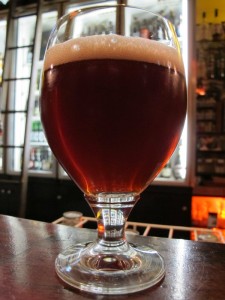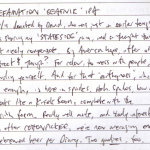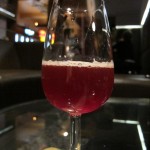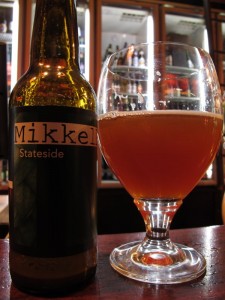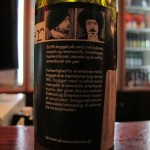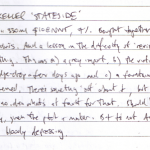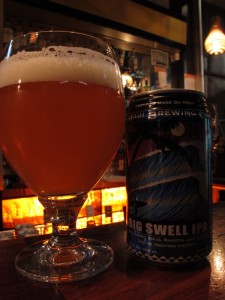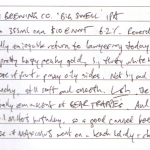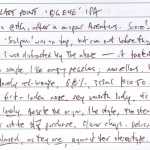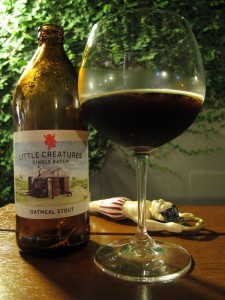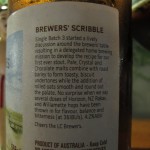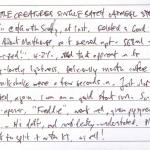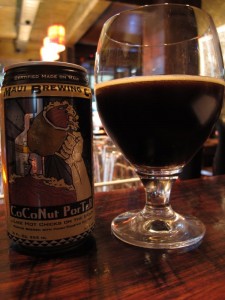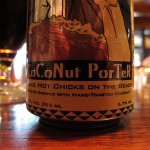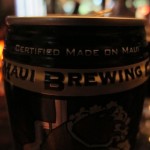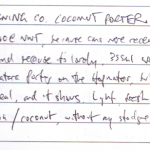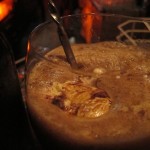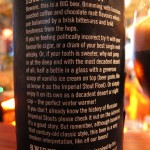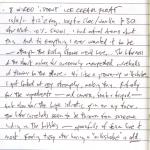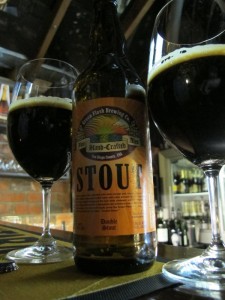
I’m fairly sure that the last half of my notes for this were back-filled the next day. In terms of its appearance in the book, this was a classic Distracted Beer, and a convenient reminder that the actual Beer Diary is still a personal thing, even though it’s (obviously) now (also) a public thing. My presumably-only-barely-legible (if that) scratchings1 still aren’t really written with public consumption in mind — this thing is. They’re different, the Beer Diary and the Beer Diary, and a scan of the one appears on the other as Proof of Authenticity as much as anything else, I suppose. And just like my photography gets a little loose if I’m having too much fun, so too go the notes.
The tasting at Weta Digital replaced my regular Friday night bar shift, and so my “working day” was over seven or eight hours earlier than it ordinarily would be — you know, an entire normal-person day earlier. I dropped off my rented tasting glasses at Regional, grabbed this off the shelf pretty-much on a whim (having liked stuff from Green Flash, before), and wandered to the pub — by which (in this instance) I mean the Hop Garden, a very-short downhill amble from my house, bless it.
If I recall correctly — it became a long night, so I quite-probably don’t — I plonked this in the fridge and was waiting for Scott to finish, figuring we’d split it. That probably means there was a Renaissance ‘Elemental’ or Three Boys Oyster Stout or two before this, whichever was the current nice-on-a-rainy-day Dark Thing On Tap. And when we did get around to it, it was paired with some mispoured Aberlour whisky. Utterly marvellous as a combination,2 but I was clearly well into the territory of the Rule Against Plural Big Beers. Ordinarily that means I wouldn’t have something ‘new’ and ordinarily that means I wouldn’t make a Diary entry — but there are always exceptions: some occasions warrant celebratory beers, and some beer-related moments are worth recording, new-beer or no.
I’ll just have to get another bottle. I remember really enjoying it, and my notes certainly sound like me recommending something very-much “my thing” to myself.3 I just can’t quite squint well enough through the twin hazes of the Overexcitable Day and the Overindulgent Night to get much of a grab on the specifics. I recall expecting it to be bigger-and-scarier — one of those huge, powerful beers that prove a Worthy Fight, maybe — but being delighted by the easy-going, smooth massiveness of it. You could say it was a little bit Michael Clarke Duncan in The Green Mile, perhaps; superficially imposing but actually a big, charming softie.
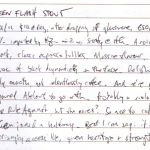
Verbatim: Green Flash Stout 29/4/11 $14 @ Reg, after dropping off glassware. 650ml 8.8% imported by HZ ÷ 2 w/ Scotty @ HG. A void of dark, classic espresso bubbles. Massive flavour, big ’splosion of black dynamite in the face. Delish. Really smooth, not relentlessly coffee. And we’ve got mispoured Aberlours to go with. Probably a violation of the Rule Against, but who cares? So nice to catch up — and Gen joined in halfway. Best I can say: it was surprisingly accessible, given heritage + strength.
1: Weirdly, I get people not-infrequently remarking the I have neat handwriting. I think this is mostly because my scrawl is tiny, more than anything. And so effectively-from-afar, maybe it has the superficial appearance of tidiness. I’m not quite sure what caused my microscopic handwriting, but it’s led some people to assume that the Diary is quite a bit bigger than it actually is and so be surprised by the appearance, somewhere, of the little notebook itself. To give a sense of scale: in a one-hour lecture at law school, I’d use a single side of A4 for notes, at roughly 18-20 words per line. Yeesh.
2: Speaking of which: not too long after, the crowd I had my Trappist Dance Card tasting with were at Hop Garden for a beer-and-whisky tasting. A timetable snafu prevented me from joining in, but it sounded fantastic. Stu from Yeastie Boys joined in and helped out, given the obvious beer-and-whisky resonance of the just-released ‘Rex Attitude’. I was musing about beer-and-x not long ago, and have since stumbled upon my own plan for a little beer-and-coffee tasting, and am due to join in a beer-and-cocktails evening fairly soon. Details and nerdy photos to follow, naturally. Beer’s been around since the dawn of Civilisation, but still keeps you guessing.
3: Honestly, my memory is terrible. Much of my mental life is like this, as it pertains to reading things I’ve written or just when it comes to finding things around the house. It’s not at all uncommon to be sitting here at my desk and to get the idea that a cup of tea might be nice — only to wander downstairs to the kitchen to find one already there, sitting forgotten-about from a few paragraphs (or a few scenes of a TV show, or a level or obvious checkpoint of a videogame) ago. It’s a good thing I like over-brewed tea.



